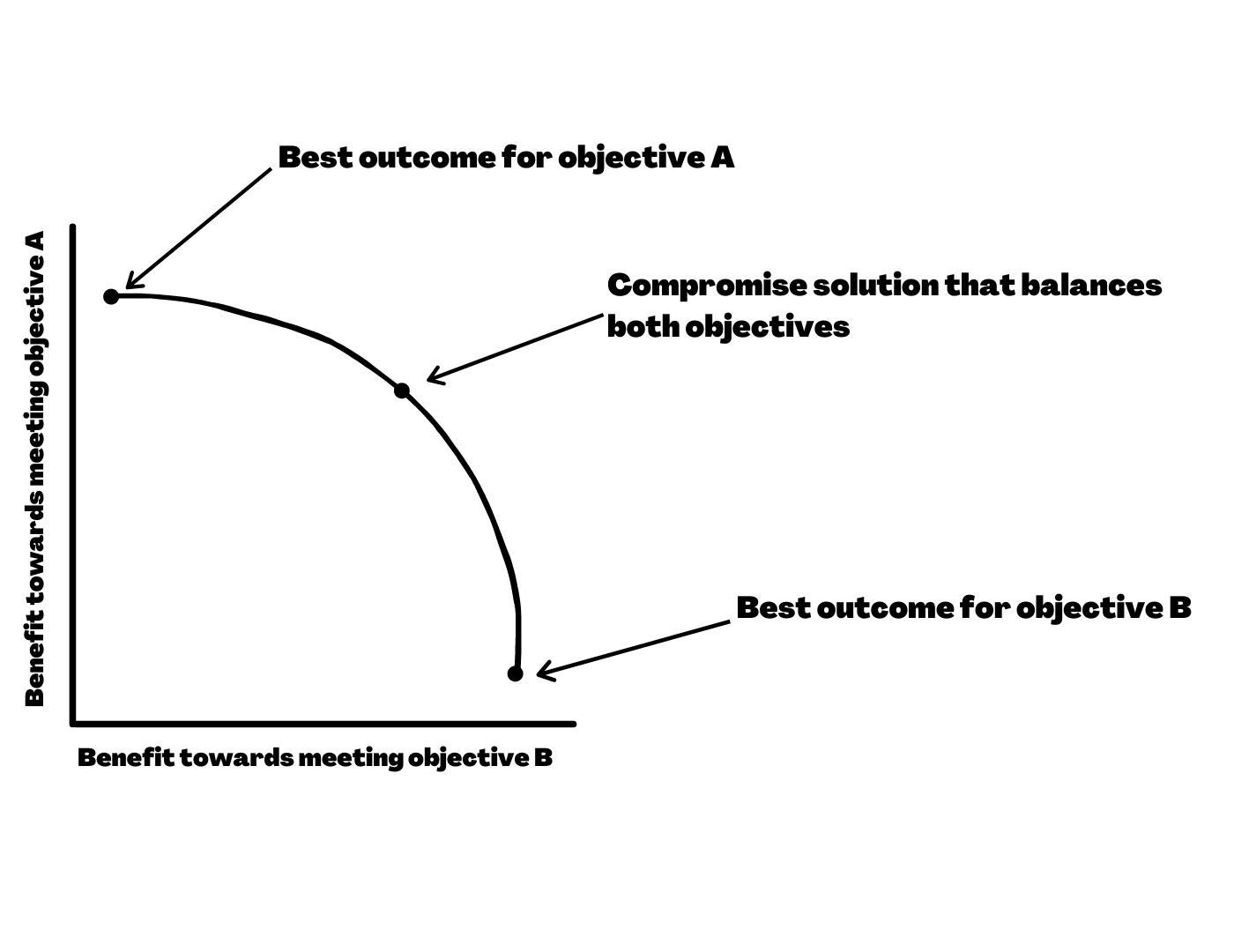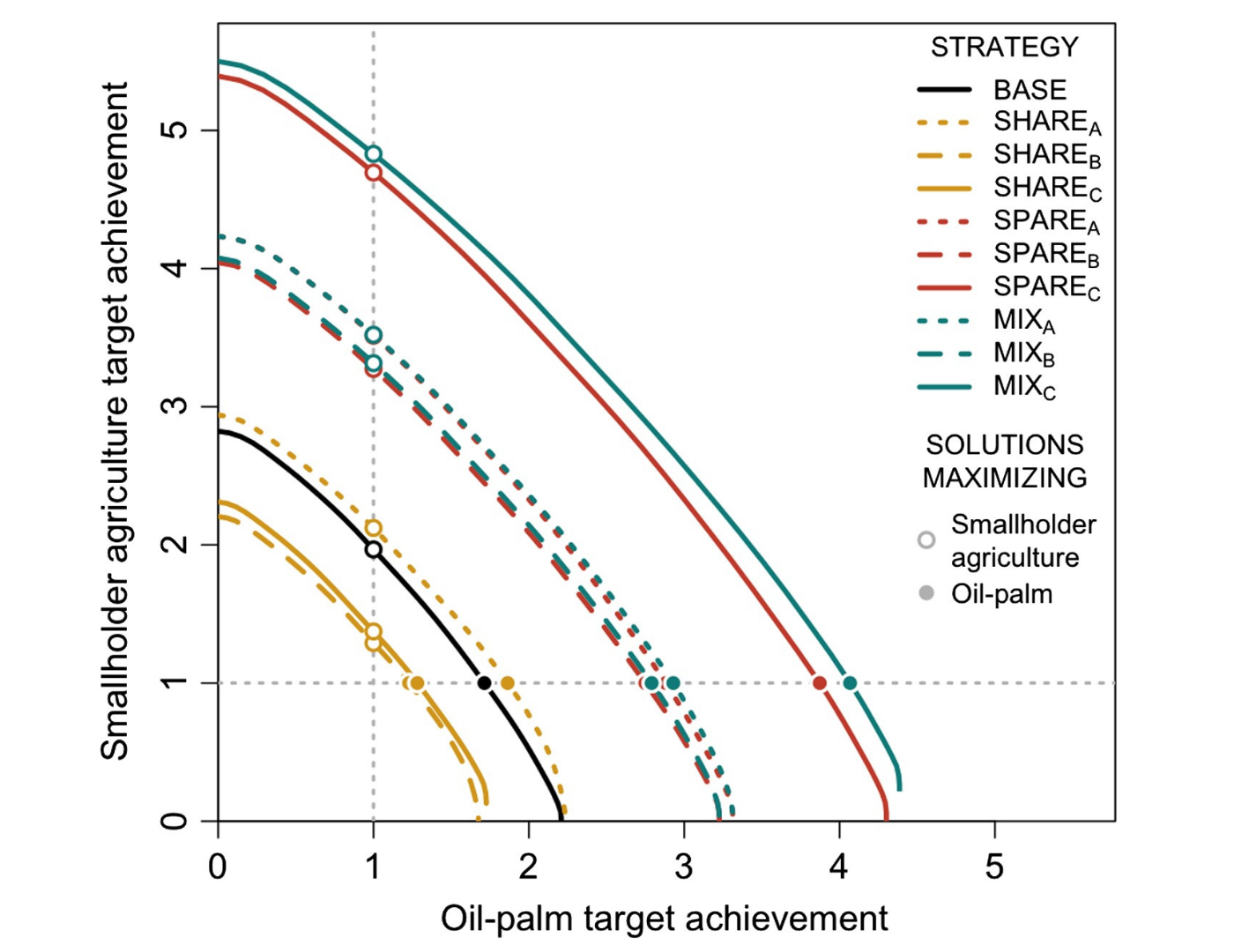Understanding trade-offs and trade-off curves.
A trade-off is a decision that involves diminishing or losing one quality, quantity, or property of a set or design in return for gains in other aspects. In other words, a tradeoff is where one thing increases, and another must decrease. In spatial conservation planning it is rare that all objectives can be maximised simultaneously, and therefore trade-offs often exist between them.
These trade-offs can be quantified and plotted on a trade-off curve to help decision makers better understand these trade-offs, the relationships between the competing objectives, and to identify compromise solutions that perform well for the multiple objectives. This is particularly important for guiding policy.

EXAMPLE: CENTRAL KALIMANTAN, INDONESIAN BORNEO
A team of scientists constructed trade-off curves for a multiple‐objective trade‐off problem in the Ex‐Mega Rice Project (EMRP) region of Central Kalimantan, Indonesian Borneo. The area is a tropical peat forest region with substantial biodiversity but also strong pressures for agricultural development, as well as a globally important area for reducing carbon emissions from land use, particularly from burning peat in recent years. Local, industrial and global stakeholders are characterized by their focus on local food production, development of local economies and improvement of biodiversity and carbon emissions, respectively. The landscape is strongly heterogeneous, due to both biophysical conditions and past development history, and includes areas of extant forest, degraded forest and abandoned deforested areas, and production land uses.
Tropical forest landscapes face competing demands for conserving biodiversity, sustaining ecosystem services and accommodating production systems such as forestry and agriculture. Land-sparing and land-sharing have emerged as contrasting strategies to manage trade-offs between production and biodiversity conservation. Both strategies are evident in land-management policies at local-to-international scales. However, studies rarely report the impacts of these strategies, assessed for multiple stakeholders and multiple ecosystem services, particularly in real landscapes.
Using Marxan with Zones the team analysed the potential outcomes under 10 alternative policy scenarios, including land-sharing, land-sparing and mixed strategies. Through the use of trade-off curves, they identified trade-offs between smallholder agriculture and oil palm, subject to achievement of a set of carbon, timber and biodiversity conservation targets. Find out more about this case study on our Community Page.

Trade-off curves show maximum smallholder agriculture and oil palm target achievement, subject to achievement of biodiversity, forestry and carbon emissions mitigation targets. Scale is proportional to the target derived to satisfy stakeholder needs (smallholder agriculture) or current concessions (oil palm) (dashed line at 100% of target achieved). Scenarios: baseline (BASE), land-sharing (SHAREA–C), land-sparing (SPAREA–C) and mixed strategies (MIXA–C), with weak benefits (A), weak benefits and penalties (B), and strong benefits and penalties (C). Further analysis of zone composition is given for the solutions that, subject to the achievement of all other targets, maximize smallholder production (open circles) or maximize oil palm production (closed circles).
REFERENCES.
Law, E. A., Bryan, B. A., Meijaard, E., Mallawaarachchi, T., Struebig, M. J., Watts, M. E., & Wilson, K. A. (2017). Mixed policies give more options in multifunctional tropical forest landscapes. Journal of Applied Ecology, 54(1), 51-60. https://besjournals.onlinelibrary.wiley.com/doi/epdf/10.1111/1365-2664.12666
